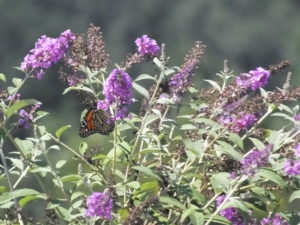Butterfly Bush: Yes or No?
go.ncsu.edu/readext?584846
en Español / em Português
El inglés es el idioma de control de esta página. En la medida en que haya algún conflicto entre la traducción al inglés y la traducción, el inglés prevalece.
Al hacer clic en el enlace de traducción se activa un servicio de traducción gratuito para convertir la página al español. Al igual que con cualquier traducción por Internet, la conversión no es sensible al contexto y puede que no traduzca el texto en su significado original. NC State Extension no garantiza la exactitud del texto traducido. Por favor, tenga en cuenta que algunas aplicaciones y/o servicios pueden no funcionar como se espera cuando se traducen.
Português
Inglês é o idioma de controle desta página. Na medida que haja algum conflito entre o texto original em Inglês e a tradução, o Inglês prevalece.
Ao clicar no link de tradução, um serviço gratuito de tradução será ativado para converter a página para o Português. Como em qualquer tradução pela internet, a conversão não é sensivel ao contexto e pode não ocorrer a tradução para o significado orginal. O serviço de Extensão da Carolina do Norte (NC State Extension) não garante a exatidão do texto traduzido. Por favor, observe que algumas funções ou serviços podem não funcionar como esperado após a tradução.
English
English is the controlling language of this page. To the extent there is any conflict between the English text and the translation, English controls.
Clicking on the translation link activates a free translation service to convert the page to Spanish. As with any Internet translation, the conversion is not context-sensitive and may not translate the text to its original meaning. NC State Extension does not guarantee the accuracy of the translated text. Please note that some applications and/or services may not function as expected when translated.
Collapse ▲The butterfly bush (Buddleia davidii) has long been a staple of the southern garden. In recent years, however, its habit of prolific re-seeding has come under attack. After a year or two in the landscape, the home gardener is inundated by seedlings popping up all over the landscape and into neighboring fields and woodland areas. Being a fast grower, the butterfly bush can quickly become established in wild areas, choking out native plants. While our local climate seems to keep the plant in check, home gardeners often complain about the problem of numerous seedlings.
The butterfly bush is a draw to butterflies who come to feed on the nectar that is produced. But because of its invasive qualities, almost half of U.S. states have banned the sale and planting of Buddleia (NC is not one of them). Because of its fast growth habit, it can be a challenge to maintain and yearly pruning is needed to keep it to a manageable size.
But, there are some “fixes” for this problem shrub for folks who don’t want to give up their butterfly-attracting plants. Frequent dead-heading before seeds are dispersed will cut down on seedling production as well as encourage more flowering. There have been introductions of sterile varieties of buddleia or those that have very low seed viability, resulting in few pop-up seedlings. These sterile introductions are also much smaller, making maintenance much easier.
If you don’t want to give up on having a butterfly bush in your garden, there are plenty of new introductions that will meet your specific needs. The Flutterby series is one of the sterile, smaller-growing choices as well as the Lo & Behold series. They offer many colors and sizes for our Burke County gardens.





